Care of Horses and Ponies in Ireland
HORSES ARE HERD ANIMALS AND SHOULD NOT BE KEPT ALONE - Like all equines, horses and ponies are much happier in a group with others of their own kind. If this is not possible, a donkey, cow, goat, or even sometimes a sheep will provide a companion. The introduction of ANY new animal should be carefully monitored as some equines are inclined to bully other animals and may seriously injure a sheep or goat.
BORED HORSES AND PONIES- develop bad stable habits like weaving (swinging his head from side to side), cribbing (biting and chewing any wooden fittings), wind sucking (taking hold of something like the stable door and sucking in breath) or biting and kicking whoever is closest. Stick to a routine where possible: either take him out for a walk or a ride at least once a day, give him some time outside grazing every day, leave the top half of the door open so he can look out and keep his haynet full. Special stable toys may also be provided.
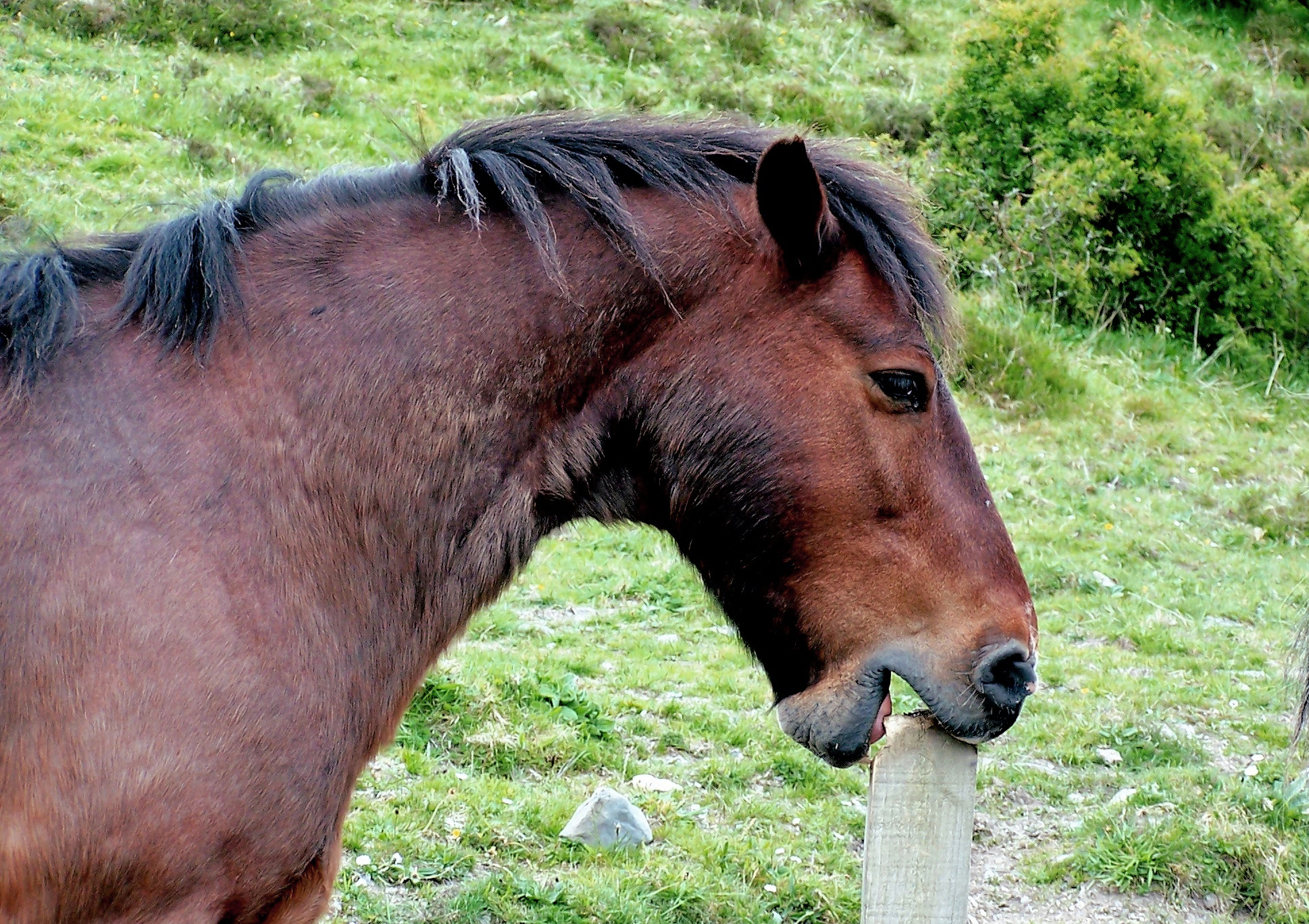
A HEALTHY HORSE OR PONY - looks bright, interested and alert, flicking his ears to every sound and swishing his tail when he moves around. He has bright, clear eyes and should neither be fat nor thin and ribby. His coat should be shiny and lie flat to the skin in the summer so he looks really sleek. His hooves should be well rounded and not spilt or overgrown.
A SICK HORSE OR PONY - will stand with the head drooped, ears lying flat and still and the body ' tucked up' and uncomfortable looking. He may have dull, lack-lustre eyes sometimes with a red rim around them, a dull 'starey' coat with no shine and a discharge from his nostrils. He will have no interest in his surroundings, little or no interest in food, may have difficulty passing either water or droppings or have hot, swollen legs.
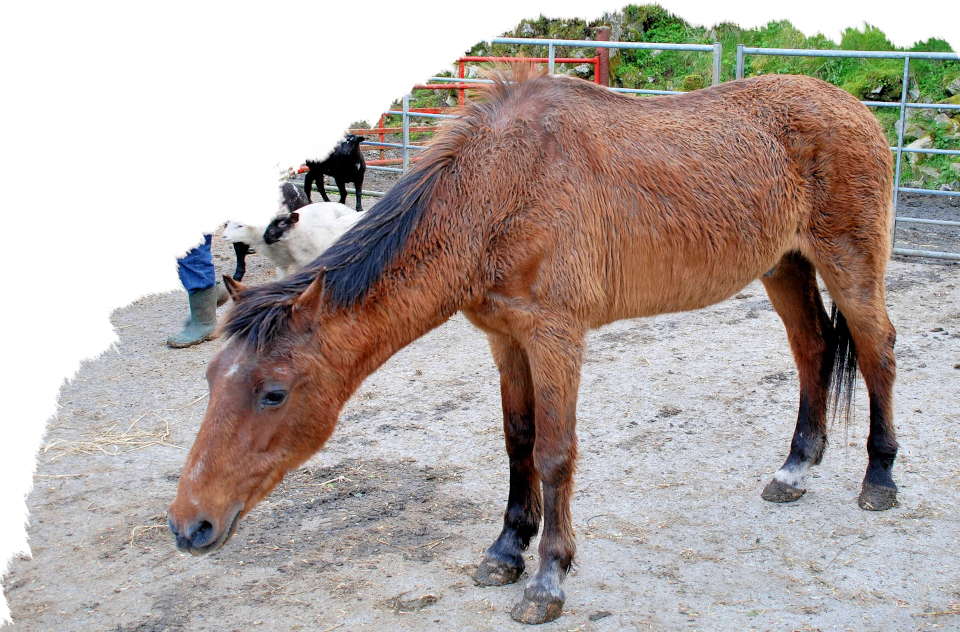
MOST HORSES AND PONIES WILL HAVE SOME WATERPROOFING IN THEIR COATS - and are able to live out all year round provided they have plenty of shelter. The exceptions are finely bred animals of the thoroughbred type and horses which are specifically from hot countries like Arabs, as they do not grow the thick winter coat with the waterproof underlayer of the draught horses and moorland ponies.
ALL HORSES AND PONIES REGARDLESS OF SIZE OR SHAPE NEED SHELTER WHEN WINTERED OUTSIDE - Ideally this would be a large, roofed shed, closed on three and a half sides and situated with its back to the prevailing wind. The floor need not necessarily be concreted but should be dry, free draining and bedded with clean straw or wood shavings.
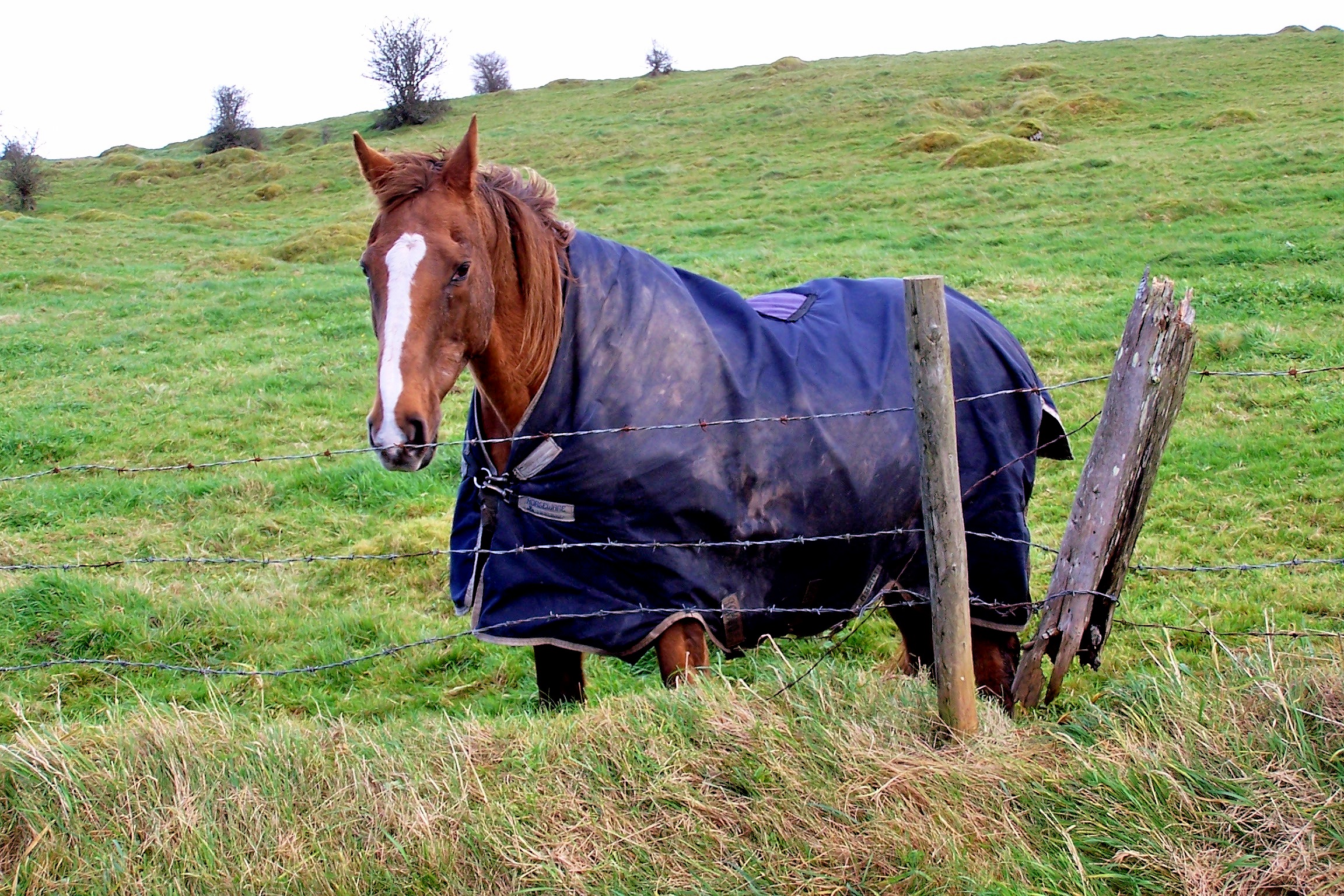
Alternatively an abundance of natural shelter in the form of trees, high hedges, stone walls, cliff bluffs and other such features which enable the animals to get out of the wind and rain is essential, or the animal can be provided with a warm, waterproof New Zealand rug.
A LOOSE BOX IS A STABLE - with outside opening half doors, where the horse and pony is free to move around and lie down when he wishes. It should be provided with a water supply, electricity, draught proof ventilation for when the top half door is closed and fittings for tying the animal up for grooming and for hanging a hay net. The walls should be strong and smooth with nothing on which the animal can hurt or rub himself and the floor should be made of slip-proof concrete.
Bedding may be of straw (preferably barley straw), wood shavings or shredded paper. The latter is useful for an animal which suffers from respiratory problems but it is not easy to manage and needs changing frequently.
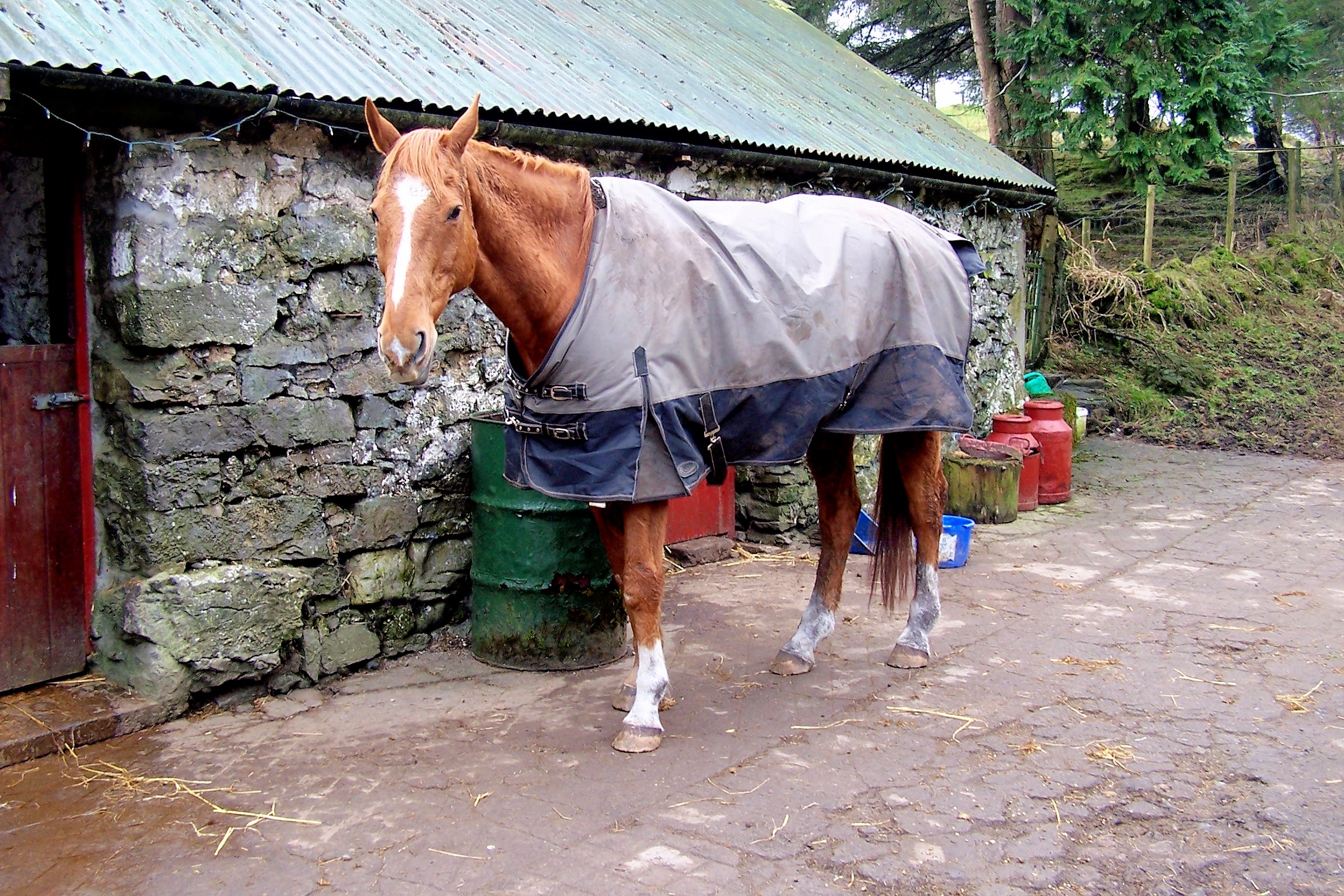
Used straw may be built into a manure heap to rot down and later spread back on the land as fertiliser. Wood shavings and paper have to be burned. As equines generally are terrified of fire this should NOT be done in the vicinity of the stable or grazing area. Stabled animals which are clipped out MUST be rugged with a suitable warm quilted stable rug in winter and a lightweight fly sheet in the summer.
RUGS - need to be properly fitted to prevent rubbing and must be checked at least once a day to make sure they have not slipped or are caught up on a bush etc. They are available in all combinations and sizes from any reputable equine supplier.
RAINSCALD AND MUD FEVER - Horses and ponies which are constantly wet may develop a condition called rainscald on their backs causing the skin to become chapped and sore with hair loss. Likewise, animals kept constantly in wet muddy conditions may develop mud fever when the skin around their heels becomes chapped and sore. In bad cases the sores become infected and travel up the legs causing lameness. In both cases the animals must be removed to a dry place and kept dry and warm until such time as the sores heal. Dermobion gel or Sudocream are useful to aid healing.
FEEDING- Horses and ponies primarily eat grass or grass substitutes like hay, haylage, chaff and alfalfa. Carrots, apples, well soaked sugar beet pulp, linseed cake and 'hard feeds' (or concentrates) may also be fed according to the type, size, condition and workload. Most ponies are 'good doers' and suffer more from overfeeding than underfeeding. A general rule would be that the more highly bred your horse or pony the more attention you will have to pay to his diet.
Carbohydrates in the form of 'hard feed' (branded bags containing a mixture of cereals and often molasses) are not usually required unless the animal is working or in poor condition. All horses and ponies require bulk in the form of grass or hay to fill them up.
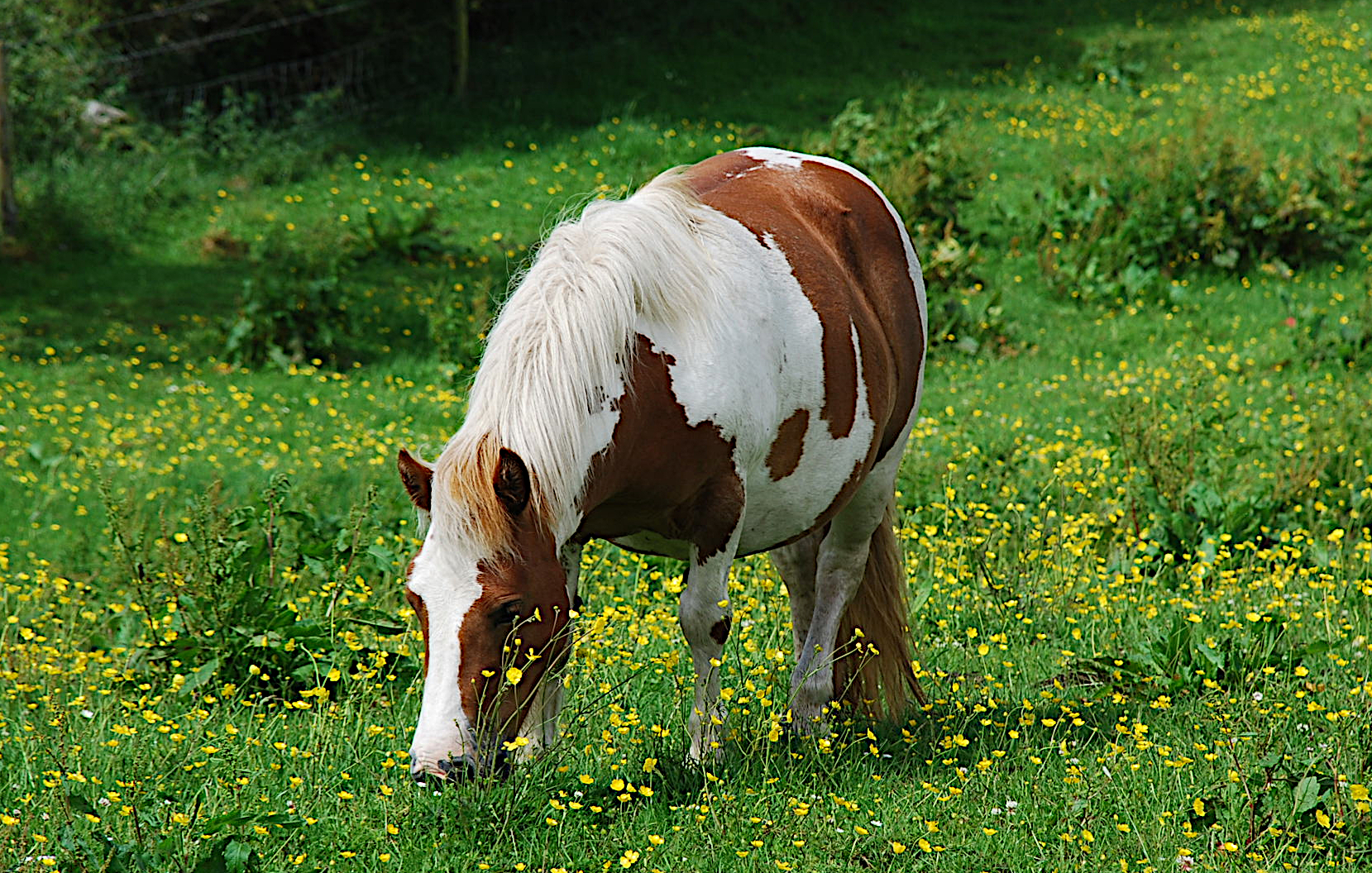
They are better fed little and often and should be given their largest feed at night. Never feed immediately before or after working as this could result in colic, severe stomach pains which can lead to complications and even death.
A FRESH WATER SUPPLY - is essential at all times. If a trough is provided this should be checked regularly and kept clean. If the horse or pony is taking water from a stream or lake make sure the access is clean and easy with no risk of the animal slipping, falling in and possibly drowning.
GRASSLAND - needs management. Horses and ponies are selective eaters, tending to eat all the short rich grasses and leaving the longer, coarser grasses or any that have been fouled. Over a period of time they will graze certain areas bare encouraging the growth of docks, which they will not eat. Ragwort is another opportunist weed which will seed into patches of bare earth. This is a highly toxic weed with an accumulative poison which attacks the liver; eventually causing cirrhosis and death. Whilst horses and ponies rarely eat ragwort when it is fresh and they have plenty of other food to eat, they will eat it when it is trampled, cut or wilted, or if they are hungry. Unless you have access to a huge area of grazing it is best to divide the field into sections so one area can be rested while the other grazed. Ragwort MUST be pulled out by the root and burned. Other ungrazed areas should be regularly scythed or 'topped' with a mower.
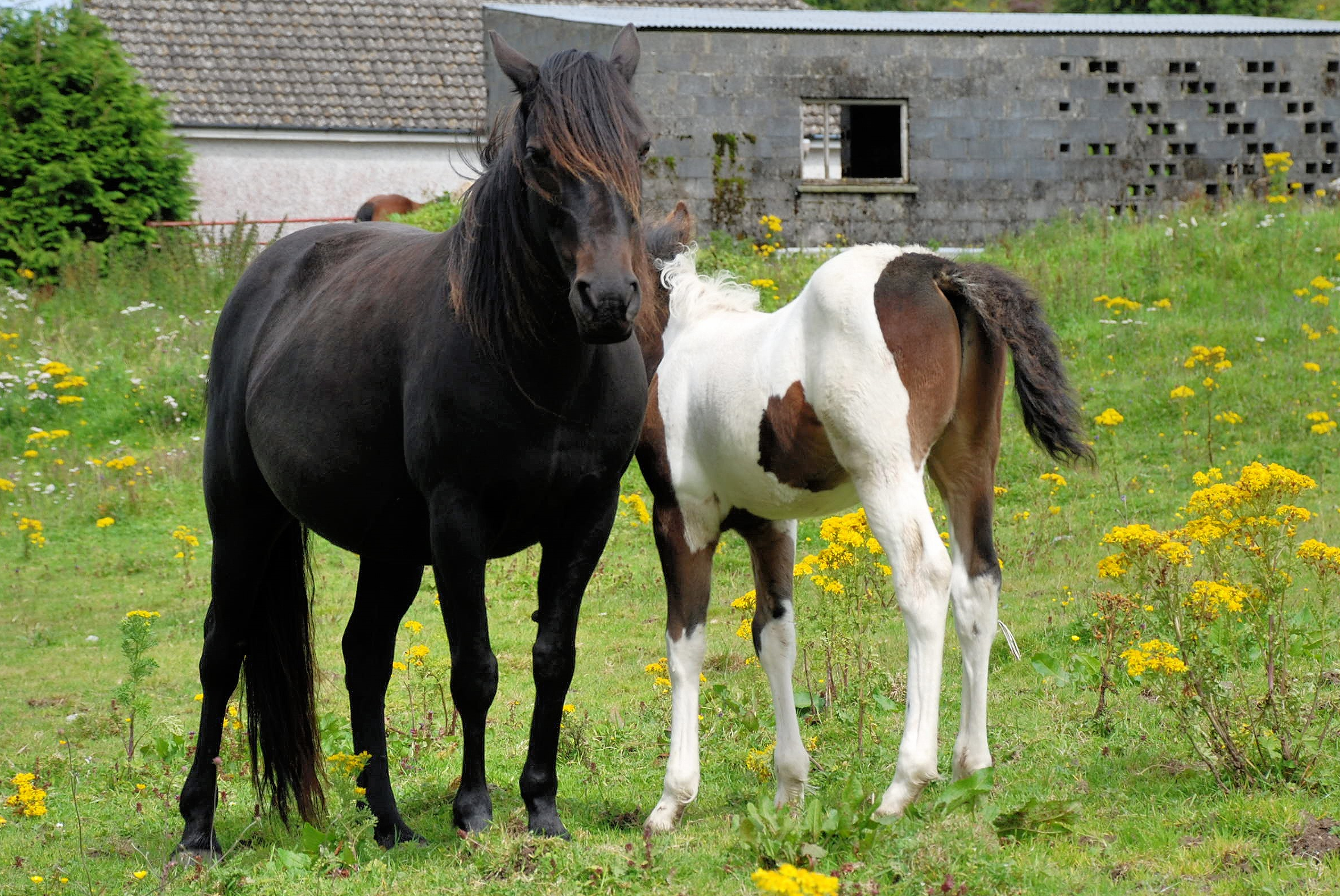
FENCING - for all equines should be free from barbed wire. Thick, trimmed hedges are ideal; post and rail is safe, attractive but expensive; posts and three strands of rustproof 'bull' wire is an effective alternative but ensure that the lowest wire is set at least 30cm from the ground so the animal is not likely to get a foot caught by stepping over it. Electric fences are expensive to set up but an ideal solution in most places. Gates should be sturdy with good strong fasteners.
GROOMING - keeps your horse or pony's coat and skin in good condition by removing the dirt and old grease from the pores of his skin so it breathes and sweats properly. It also increases the blood flow under the skin which helps the coat to grow sleek and glossy. In the wild, horses and ponies will groom each other using their teeth and their coats will adjust naturally to the season.
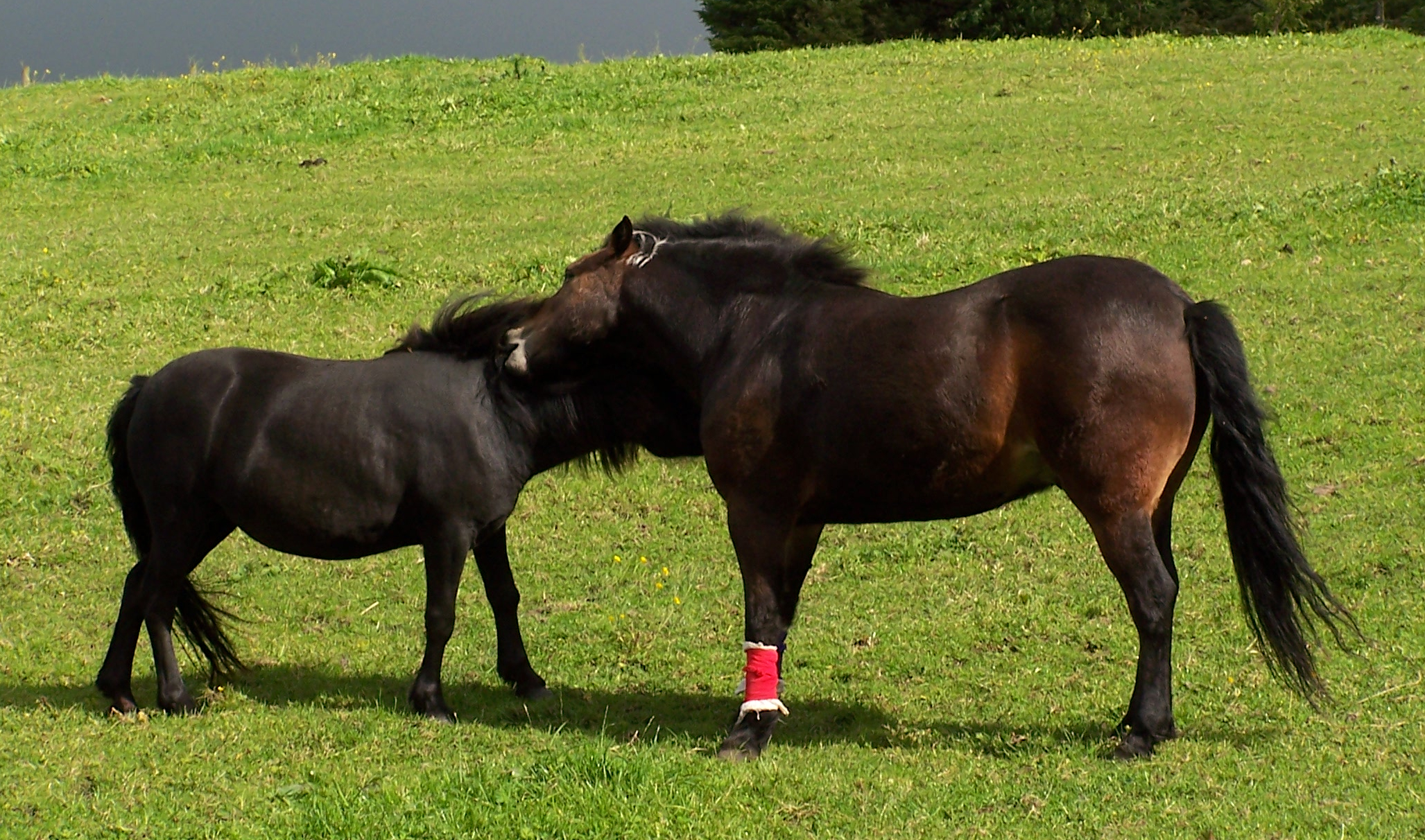
Animals living out and not working should not be groomed as the grease in the coat, removed by grooming, is needed for essential waterproofing. Stabled animals generally need a little extra help to keep their coats and skin in good condition. Grooming tools include a dandybrush for removing mud (long stiff bristles), a body brush (short softer bristles) for smoothing out grease and dirt, a curry comb for cleaning the body brush, a mane comb and a soft stable rubber or cloth for polishing the coat. Eyes, nostrils and dock should be lightly sponged clean with lukewarm water using a separate sponge for each area.
TACK- for horses and ponies comes in all sorts of different sizes and requirements depending on the work the animal is doing and is readily available both new and secondhand from a good saddler. Always take advice from an expert when fitting saddles, bridles, bits or any other type of harness as badly fitting tack will cause discomfort to your horse or pony and cause him to play up and be reluctant to be ridden or driven in the future. Once he is comfortable and well looked after he will be your friend to enjoy for many, many years.
HOOF CARE- is extremely important. Only a qualified registered farrier should be allowed to trim or shoe your horse or pony. In the wild horses and ponies wear down their feet naturally but when worked on hard surfaces they sometimes need an iron shoe to protect the hooves from wearing too fast and causing damage and soreness. If the animal is shod he should be attended to every four to six weeks.
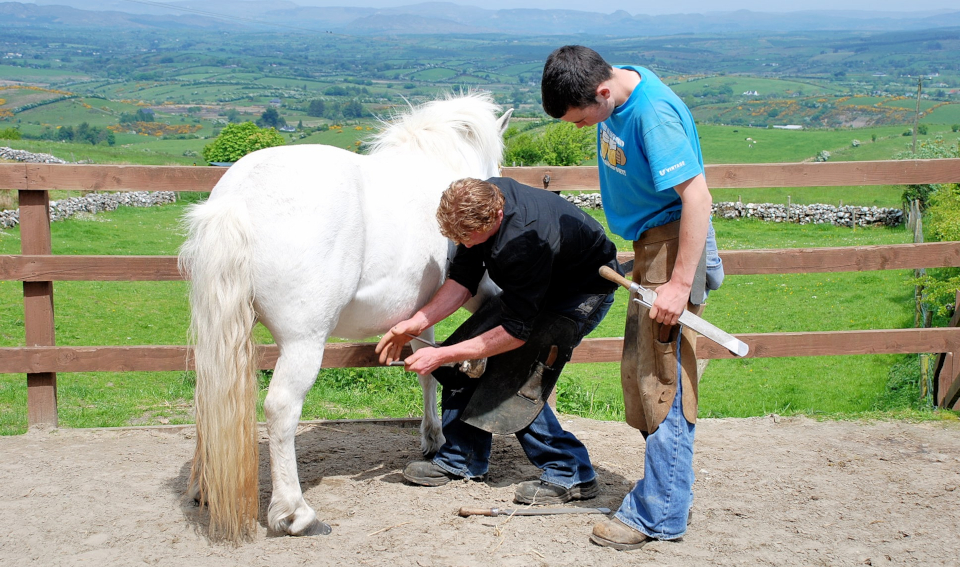
If only trimming is needed this should be every three to four months depending on the individual animal and the type of land he is using as obviously the hooves will wear down more on hard rocky surfaces than on soft, rich grassland. Conversely, hooves on soft, wet land will grow fast and need more frequent trimming and shaping to keep them in good condition and prevent splitting. All hooves should be cleaned out with a hoof pick on a daily basis to remove dirt, stones and to check for injuries of any sort.
LAMINITIS - Ponies in particular are very prone to a disease called laminitis which is caused by overeating, sudden changes of diet or stress such as travelling, moving home or losing a friend. This is an extremely painful and dangerous condition which requires immediate veterinary and farrier attention. The hooves will feel hot and the pony will lean back on his heels with the forelegs extended in front to try and take the weight off the soles of the feet.
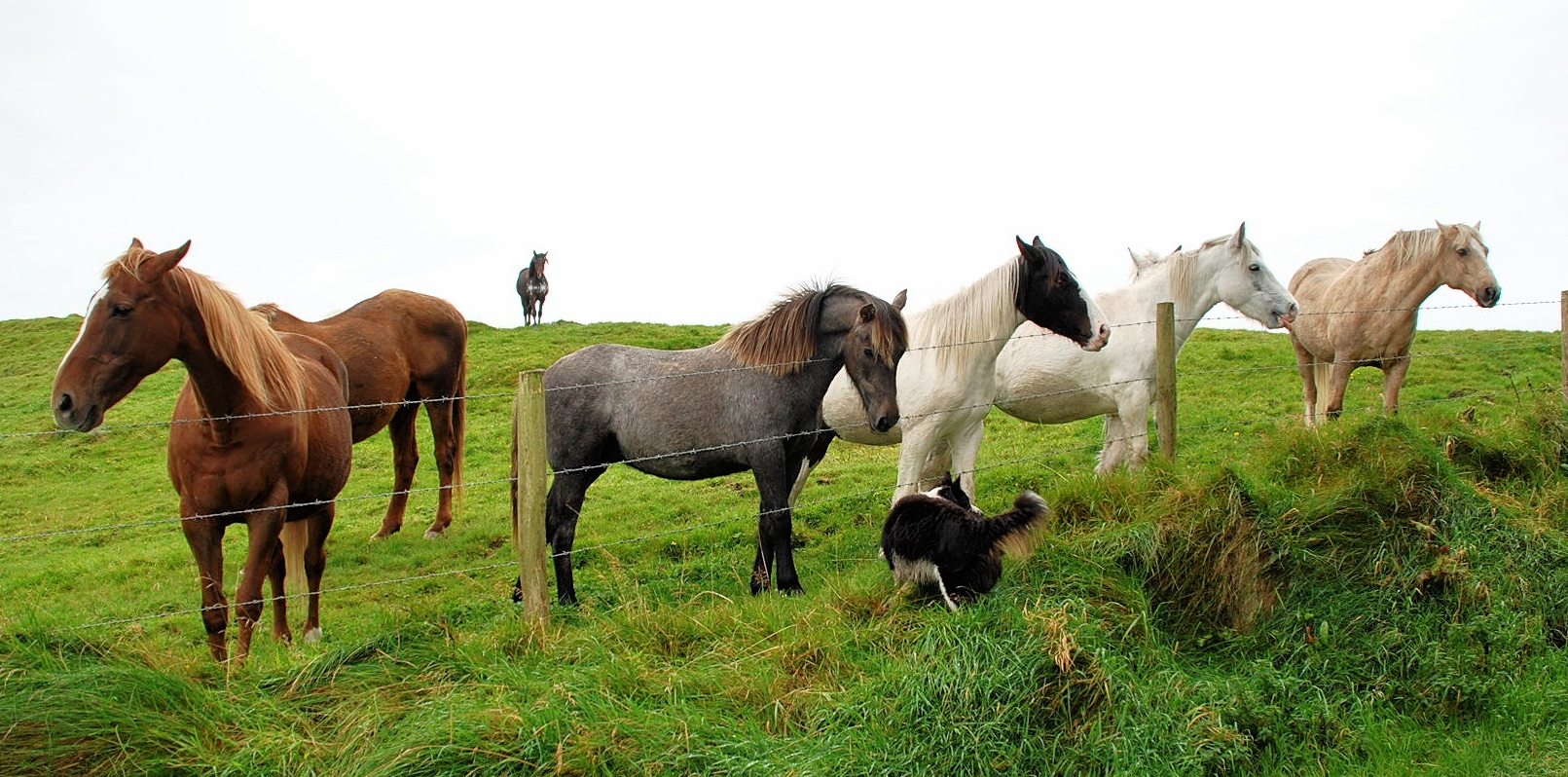
IF NEGLECTED THIS CONDITION WILL CAUSE THE BONE INSIDE THE HOOF TO ROTATE AND EVENTUALLY PUNCTURE THROUGH THE BOTTOM (SOLE) OF THE HOOF. At this point your friend will have to be euthanased, so never neglect the symptoms of laminitis.
This link has useful information about laminitis: The Laminitis Site
PARASITES - can be a problem and require a regular routine of worming or dosing. Horses and ponies generally need to be wormed with a recognised equine wormer at least every six months, usually in April and September, followed by a double dose in October for tapeworm.
Theories on worming vary from region to region so it is always best to take the advice of a local veterinary surgeon. External parasites such as lice should be treated immediately with a suitable Pour On product such as Butox or Ridect, or with an Ivermectin injection given by your vet. The pour on products are also very useful for fly control in the summer as they discourage biting insects from attacking.
A rest home for donkeys and ponies
Copyright © 2025 Sathya Sai Sanctuary
Charity No. CHY10840


 Aggie to Cobby
Aggie to Cobby Copper to Legend
Copper to Legend Lisa to Peader
Lisa to Peader Peggy to Wispa
Peggy to Wispa